Discover How David Gilmour’s Melodic Mastery Helped Illuminate Pink Floyd’s 1973 Masterpiece, ‘The Dark Side of the Moon’
Learn why perfect note and tonal choices rather than technical flash made ‘Dark Side’ one of rock’s most brilliant and groundbreaking works

In Nicholas Schaffner’s excellent Pink Floyd biography, Saucerful of Secrets, he describes how, during the band’s last tours, conversations among the side musicians would inevitably focus on David Gilmour’s musical brilliance and inspirational presence as a bandleader. It’s not surprising. Despite being a member of one of the most popular bands of all time, Gilmour is a musician’s musician, admired by peers and devotees for his melodic mastery as a guitarist and vocalist and his willingness to craft parts that flawlessly dovetail with the entire arrangement.
It’s also no surprise then that Gilmour’s searing emotive lead break on “Comfortably Numb,” from 1979’s The Wall, was recently voted the greatest guitar solo of all-time by Guitar Player readers, who were likely entranced by its sublimation of technique into sheer lyrical beauty.
Noted Pink Floyd touring saxophonist Scott Page, “To me [he] is the master of melody. He can kill you with two little notes.”
In honor of the 50th anniversary of The Dark Side of the Moon, let’s examine Gilmour’s playing approach on this groundbreaking record.
Ex. 1 recalls the languid ii - V (or i - IV) Dorian progression arpeggios, Em - A7, on the track “Breathe,” which opens the album. Notice the added color tones, like 7ths and 9ths, and the sliding-6ths fill in bar 4.
I’ve changed the original Fmaj7 - G - D7#9 - D7 b9 turnaround (something Pink Floyd keyboardist Richard Wright said was inspired by the turnaround in Miles Davis’s “All Blues”) to a B bmaj7 - B7#9 progression and switched the original meter from 44 to 128.
Kick on a Uni-Vibe pedal with wide depth and slow speed and you should be able to catch the vibe of the original.
Before committing The Dark Side of the Moon to vinyl, Pink Floyd performed the suite of songs live numerous times, during which they experimented with various arrangements. What would become “On the Run” started as an improvised piece on an E tonality called “The Travel Sequence.”
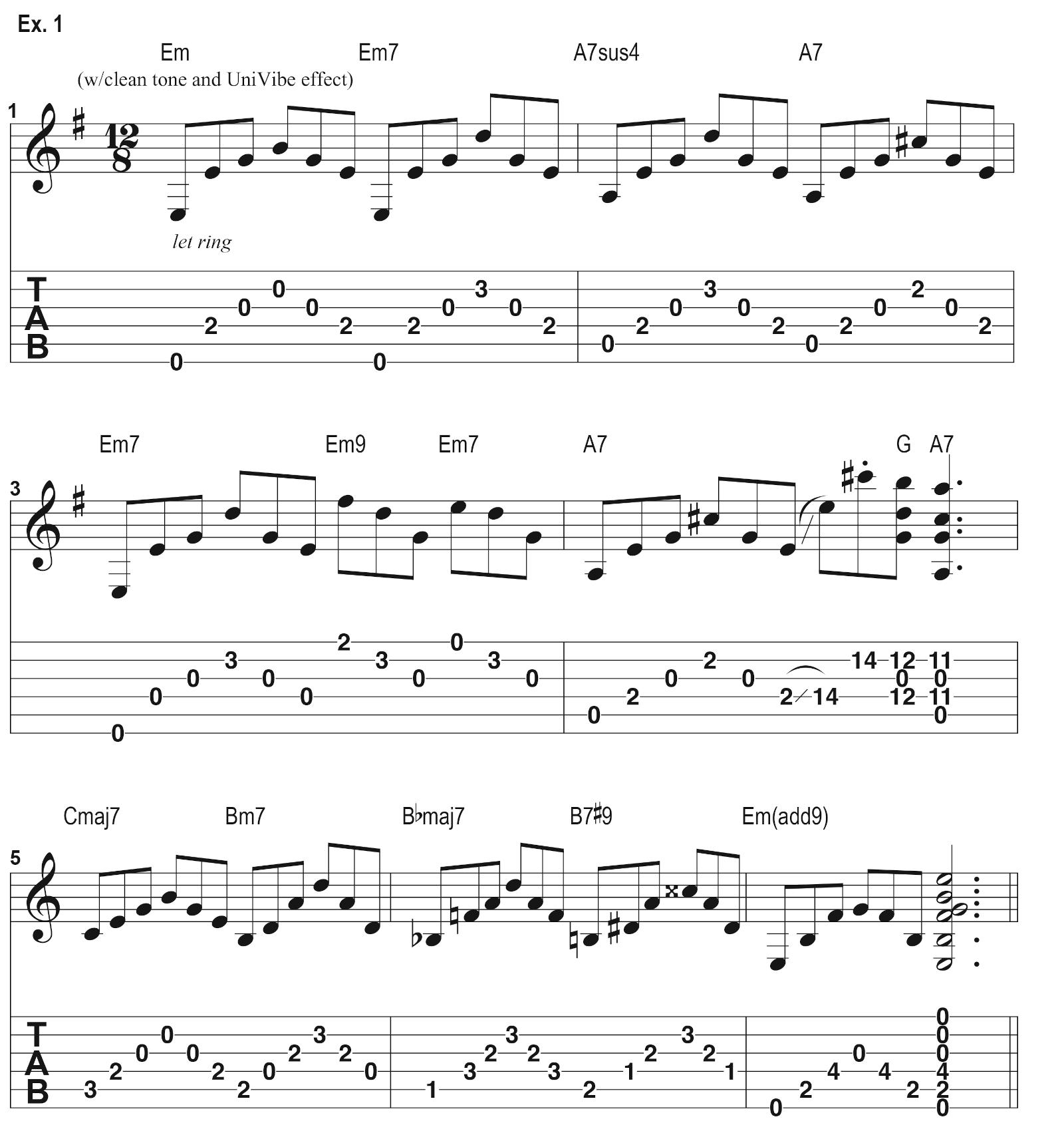
Ex. 2 is based on some of the elements found in these live jams.
Gilmour was often experimenting with delay regeneration from a Binson Echorec unit. You can achieve a similar effect with a tape-head delay modeler, with the delay time set to produce a quarter-note rhythm, relative to the tempo, which is approximately 150 beats per minute; 400 milliseconds should get you close. Set the dry/wet mix to about 60/40, with two or three repeats.
When it came time to record their grand epic, the Floydians replaced “The Travel Sequence” with an eight-note E minor pentatonic pattern that they fed into an EMS Synthi A synthesizer, sped up considerably and repeated for several minutes.
Atop this, the band overdubbed sound effects, recordings and tape loops, including one of Gilmour scraping his guitar neck against a mic stand.
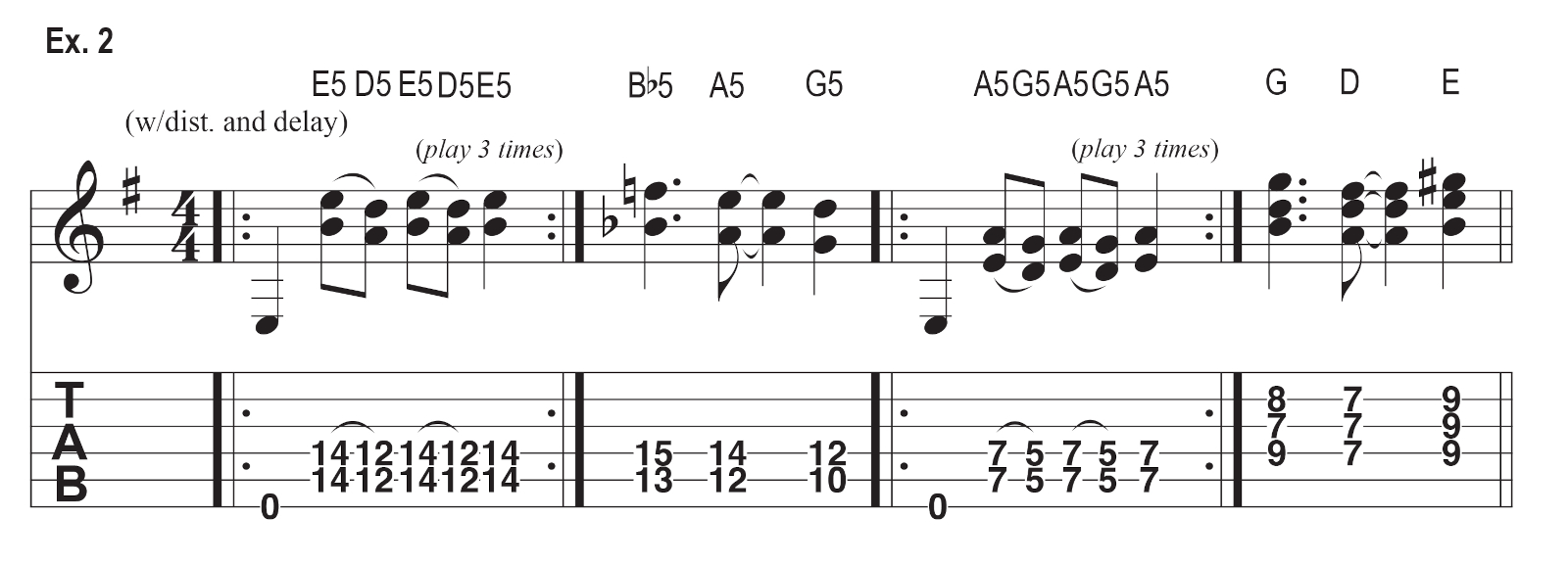
Ex. 3 reimagines “On the Run” as a 16-note pentatonic pattern that can be used as an exercise for both pick-hand and fret-hand phrasing technique. It also serves as a reminder that, as a musician, editing your playing and/or laying out completely is sometimes the best choice.
Despite its conceptual and sonically adventurous nature, something about The Dark Side of the Moon resonated with a large portion of the music listening public. Perhaps one of the most relatable things about it was Gilmour’s clever use of traditional blues phrasing and scales in his guitar solos.
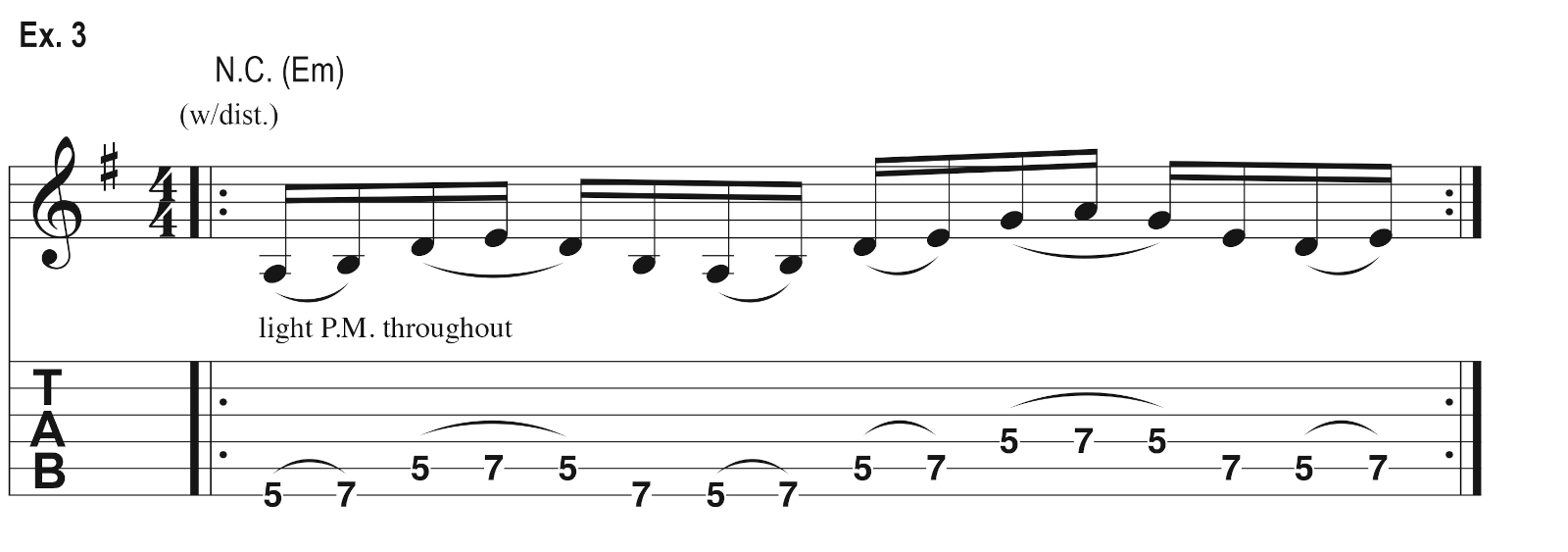
Ex. 4 is based loosely on the i - iv - v minor blues breakdown in the song “Money,” moved from the original key of B minor to A minor.
Bars 1–8 trace their origins to variations of a B.B. King-influenced call-and-response lick.
Bars 9–16 tastefully nail the root notes of the changes before segueing into some funky double-stop stabs.
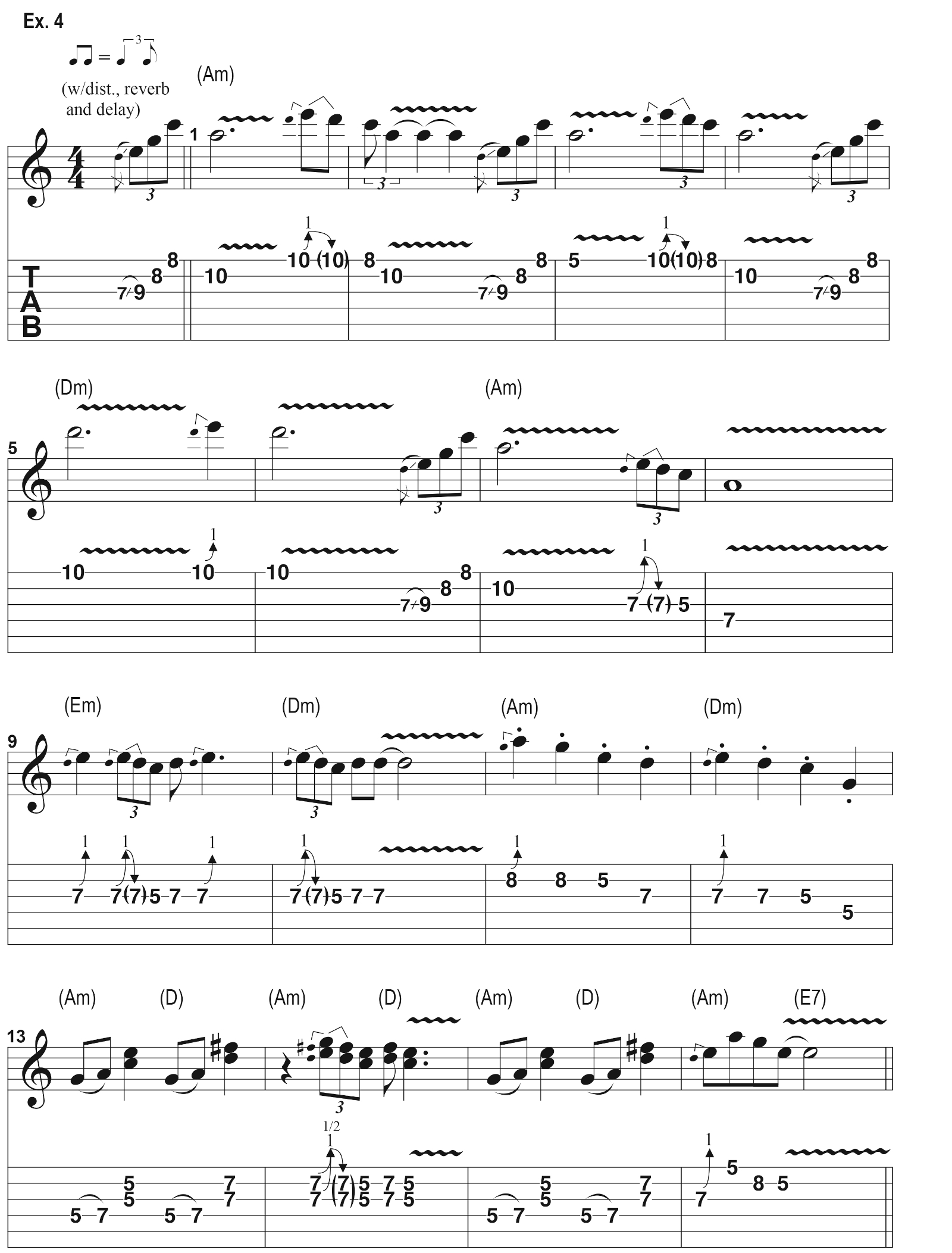
Another showcase for Gilmour’s elegant improvisational skills, the instrumental “Any Colour You Like” provides the basis for Ex. 5.
The original recapitulates the Em - A7 chord progression of “Breathe,” down a whole step, in D minor. Here, I’ve kept the same key and 12 8 meter of Ex. 1.
Reference the recorded version to get a sense for how Gilmour’s precise deployment of unison bends and R&B-style double-stops are the perfect foil to Wright’s phantasmagoric layers of synthesizer.
Try adding a rotary speaker or Uni-Vibe effect to simulate Gilmour’s psychedelic Strat tone.
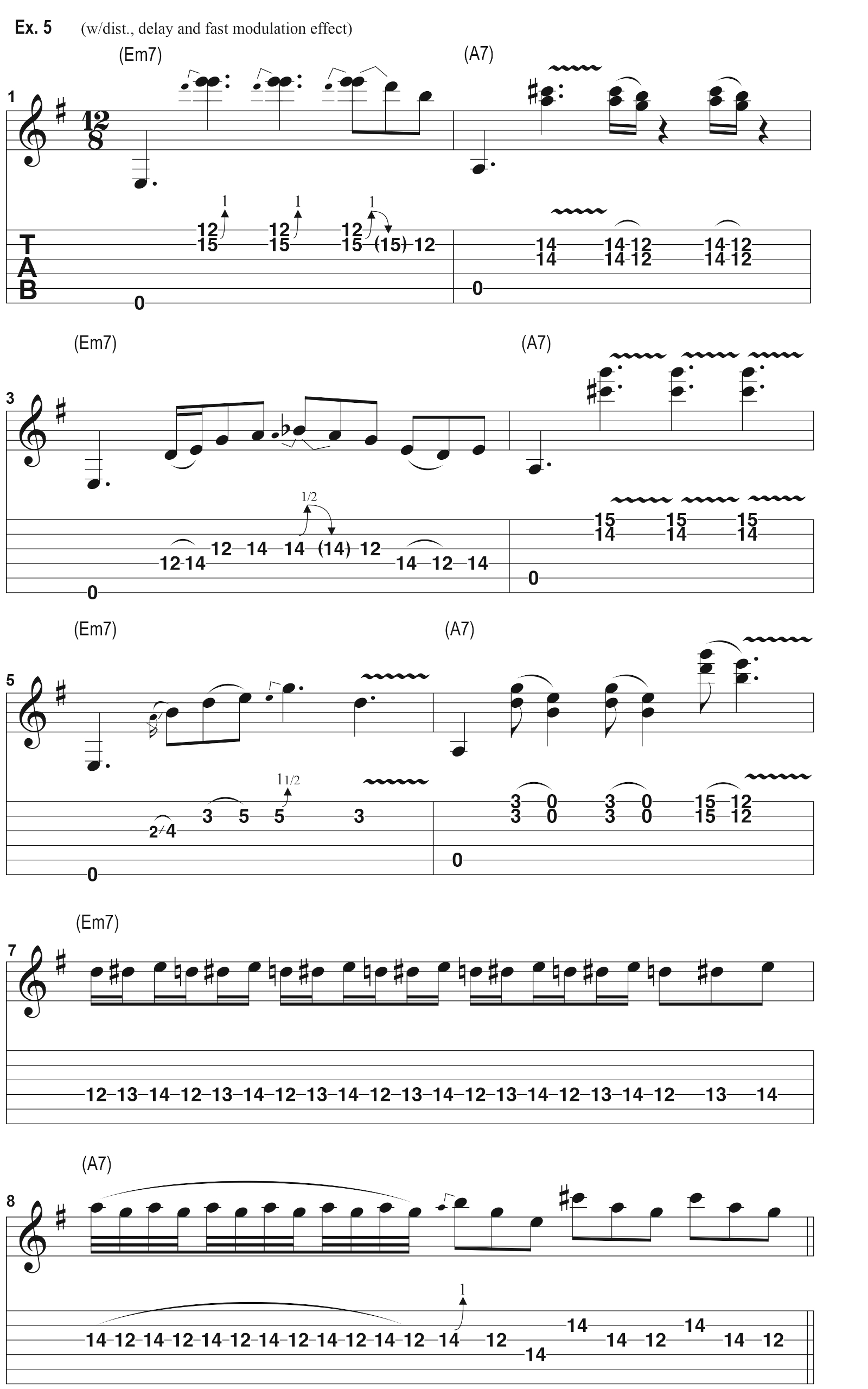
Ex.6 is modeled on the hypnotic Travis-picked fingerstyle arpeggios in “Brain Damage,” which was originally conceived by Roger Waters as a folky acoustic ballad.
I’ve moved it down from the original key of D to A but kept the I - V7 progression (G to D7/F#) – with the b7 of the chord in the highest voice, which provides the album version with its dark “verge of madness” undercurrent – and the I to II/I (A to B/A) sequence, which offers an ethereal lift.
Again, try employing a rotary speaker or Uni-Vibe effect, in this case faster and somewhat more subtle than on previous examples, to emulate the original’s sonic landscape.
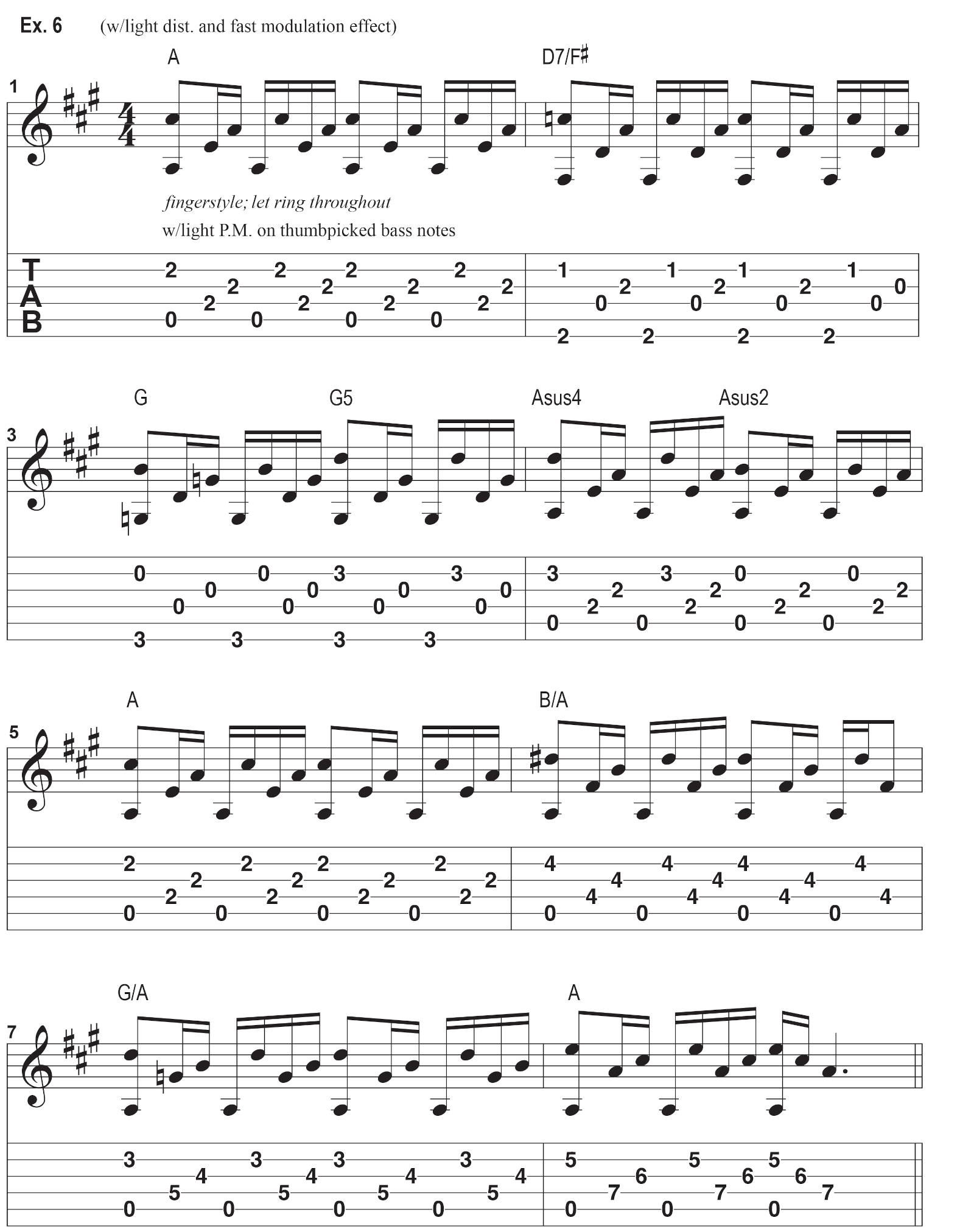
Fifty years on, The Dark Side of the Moon is considered one of rock’s most brilliant and groundbreaking works. What is most compelling about Gilmour’s contributions is not technical flash or daring improvisational forays but rather the pristine perfection of his note and tonal choices.
Perhaps the best testimony to his overall impact comes from vocalist Clare Torry, who ad-libbed the wordless vocal improvisation on the track that would become “The Great Gig in the Sky.” Although Gilmour had nothing to do with the song’s composition and only contributed atmospheric lap-steel washes to the recording, Torry claims his direction and encouragement was most influential in conceptualizing and executing her iconic vocal performance.
David Gilmour is a brilliant guitarist, but beyond that he is indeed a master of melody.
Get The Pick Newsletter
All the latest guitar news, interviews, lessons, reviews, deals and more, direct to your inbox!
“Write for five minutes a day. I mean, who can’t manage that?” Mike Stern's top five guitar tips include one simple fix to help you develop your personal guitar style
"It’s like you’re making a statement. And you never know where it’ll lead." Pete Thorn shares the tip that convinced Joe Satriani he was the right guitarist for the SatchVai Band










